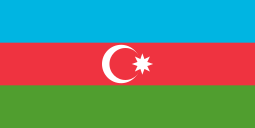
AZERBAIJAN-ARMENIA: ARMED AND DANGEROUS
Is military parity between Yerevan and Baku possible as a guarantee of peace?
25 March 2024
The thesis that the best guarantee of peace between Baku and Yerevan is military parity is popular in Armenia. At least, this is the impression one gets when reading politicians' statements, listening to experts' speeches, reviewing media materials and responses to them in social networks. Moreover, not only Armenian ones. The theme is mirrored in Azerbaijani media as well.
How did the military potentials of Armenia and Azerbaijan develop during the years of conflict? What level did they reach just before the Second Karabagh War and in what direction are they moving now? Who is arming more intensively today? And in general: how realistic is it to achieve a military balance between Azerbaijan and Armenia in the foreseeable future? Have you thought, have you calculated at all, what can such a statement of the question lead to?
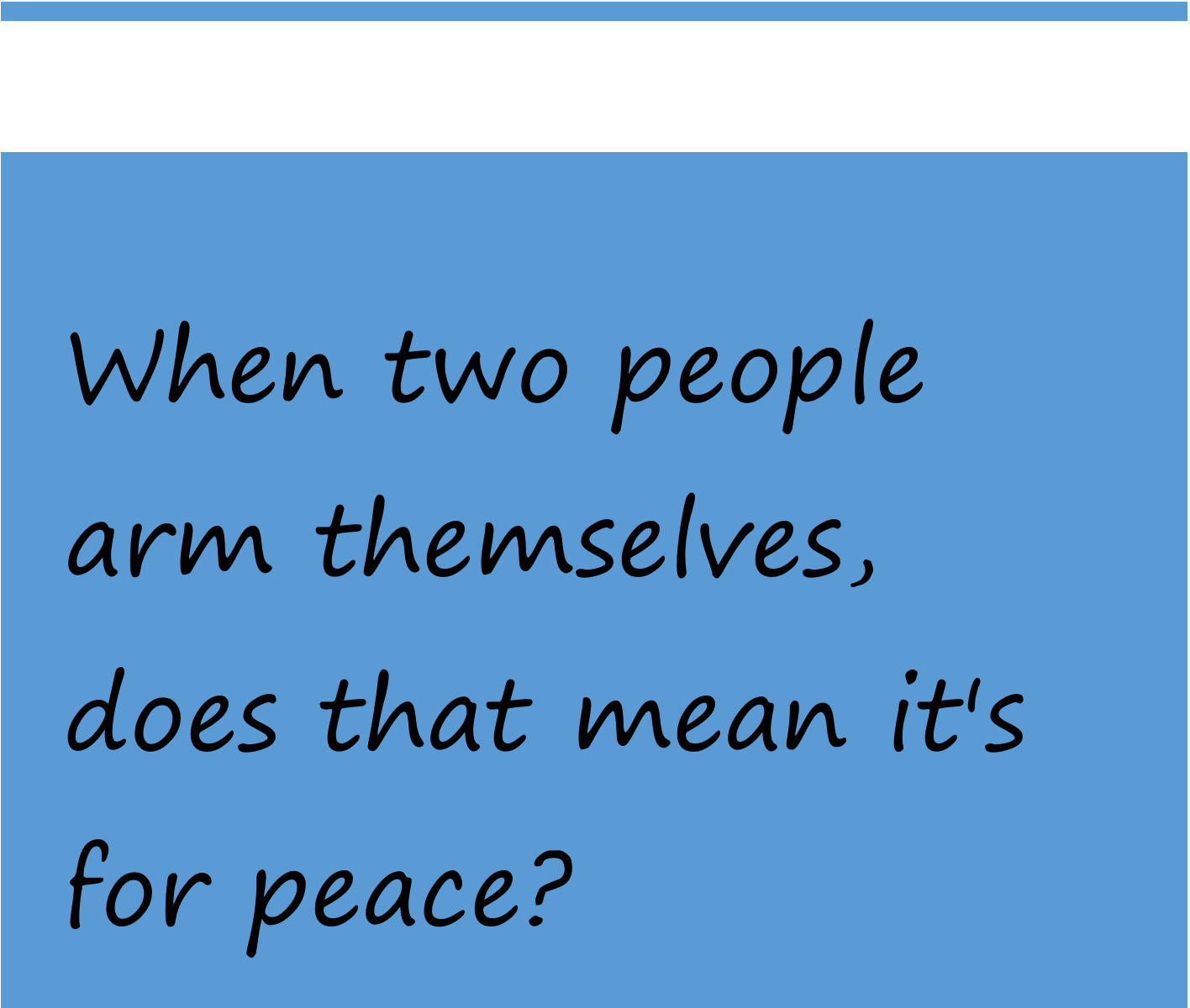
By the way, there was already military parity between Azerbaijan and Armenia, but it did not help to solve the problem. After the ceasefire in 1994, the balance in defense expenditures of the conflicting countries remained for several more years. According to the Stockholm International Peace Research Institute (SIPRI), it began to be noticeably disturbed by the end of the 1990s, and already in 2001 Azerbaijan doubled the difference in military potential. In the early 2010s, the gap reached 8.5 times. But Azerbaijan's military spending reached a historic high in 2014 - $3.43 billion against Armenia's budget of $0.46 billion.
As a result, having spent more than $32 billion on reform and rearmament, Azerbaijan has created a modern army ready for combat in new conditions over a quarter of a century. Armenia's defense expenditures during this period amounted to just over $7 billion.
We know how it ended in the fateful 2020.
[visualizer id="257040" lazy="no" class=""]
After studying this table, one should not immediately accuse the Armenian leaders of sparing money for their army and forgetting about military parity with Azerbaijan. Paradoxically, for all these 25 years, including 2020, Armenia, being one of the most militarized countries in the world, has allocated even more budgetary funds to the army in percentage terms than Azerbaijan. This is evidenced by the Global Militarization Index (GMI) compiled by the Bonn International Center for Conflict Studies (BICC). The ranking indicates the country's place among 194 states of the world, based on the share of military expenditures in the budget of each of them.
| Country/Year | 1995 | 2000 | 2005 | 2010 | 2015 | 2016 | 2017 | 2018 | 2019 | 2020 |
| Armenia | 15 | 20 | 15 | 9 | 6 | 7 | 7 | 4 | 3 | 2 |
| Azerbaijan | 25 | 31 | 26 | 22 | 10 | 16 | 16 | 15 | 15 | 10 |
Pressklub,az wrote that the 2020 war between Azerbaijan and Armenia changed a lot of things "on the ground", but surprisingly did not affect people's thinking. The spirit of confrontation was transferred from one plane to another, while the methods of solving the problem largely remained the same. The conflict continues to live in the heads of people who are occupied with the same thoughts as before the war: to pump up their muscles, to buy more weapons, to acquire new military allies.

Between Wars: Azerbaijan
Today Armenia wants to eliminate its dependence on Russia, including in terms of military supplies. This is happening loudly, accompanied by constant scandals. Azerbaijan passed this way 7-8 years ago without any noise. Already in 2016-2020, Russia accounted for only 16% of Baku's military purchases, compared to 79% in 2011-2015. In December 2016, at a joint press conference with the Israeli Prime Minister, President Aliyev first announced a major military contract with Tel Aviv worth $4.85 billion and that most of the deliveries had already been completed. According to SIPRI, in the next five years Azerbaijan absorbed 16% of all arms exported by that country. Overall, its main military suppliers from 2016 until the Second Karabakh War were Israel (68%), Russia (16%), Turkey (6%), Belarus (4.6%), and Slovakia (2.6%).
Thus, between 2011 and 2020, Azerbaijan has become the largest arms importer in Europe and the 23rd largest in the world, acquiring 3.345 billion TIV worth of arms, according to SIPRI estimates (Armenia accumulated 398 million TIV during the same period. SIPRI uses a unique pricing system: the TIV measures the military capability transferred to the importer as a result of the transaction, rather than the financial value of the supplies. This creates a clearer picture of the power of the weapons acquired).
After the war, Azerbaijan sharply reduced activity in the arms market, but soon began to pick up again just as sharply. In August 2021, Israeli and Azerbaijani newspapers reported about another major arms contract worth $2 billion being prepared between the countries. The specialized publication Defence Industry Europe revealed some details: Barak MX air defense systems will be purchased as part of the deal. These are mobile systems capable of defending against missiles of various modifications, as well as airplanes, helicopters and UAVs.
Some time later, Washington-based Middle East Institute published an article saying that Israeli corporations Meteor Aerospace and SpearUAV will deliver another batch of military equipment to Azerbaijan by 2024. "SpearUAV" is engaged in the development and production of unmanned aerial vehicles, while "Meteor Aerospace" has been specializing in the development of missile systems, satellites and air defense systems for more than 30 years. The Institute claimed that Meteor Aerospace and Caspian Ship Building Company (CSBC) even established a joint venture in Baku to fulfill future contracts.
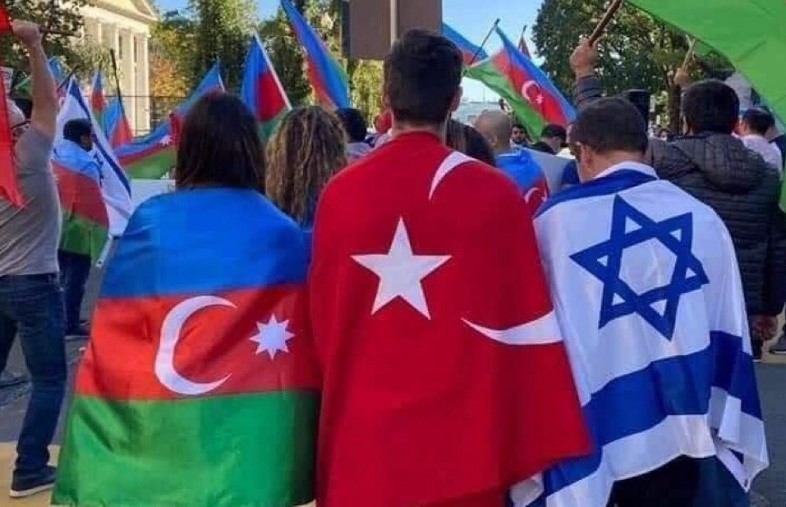
At the same time, Azerbaijan is expanding the geography of military supplies, seeking to conclude new contracts primarily with European countries. In September 2021, a number of information services with reference to the newspaper La Repubblica reported that at the "Technical Table" created between the defense departments of Italy and Azerbaijan, "Italy's contribution to the modernization plan of the Azerbaijani Armed Forces" is being discussed and negotiations are underway "on the purchase of large-caliber weapons" worth up to $2 billion. And last year, Serbian President Aleksandar Vucic said that his country had already signed a contract with Azerbaijan for the supply of self-propelled artillery units. According to media reports, we are talking about 48 Nora B52 howitzers worth 339 million dollars. They are designed to destroy artillery batteries, enemy bunkers, open passages in mined areas, and are equipped with the latest equipment, including radars and sensors, to simulate combat situations.
Between Wars: Armenia
Up until the outbreak of the Second Karabakh War, Armenia was firmly tied to Russia's military-industrial complex, which technically supported its army. Yerevan received almost 94% of its weapons from Moscow in the 2011-2020s. The second more or less prominent military supplier was Jordan (5.2%). However, the weapons that Yerevan purchased from Amman also turned out to be Russian, or rather, Soviet-made. In the fall of 2017, Jordan, which was modernizing its armed forces, put up for sale 52 combat vehicles of the self-propelled Osa AKM surface-to-air missile system. They were purchased through an intermediary by David Galstyan's company and transported to Armenia after repairs.
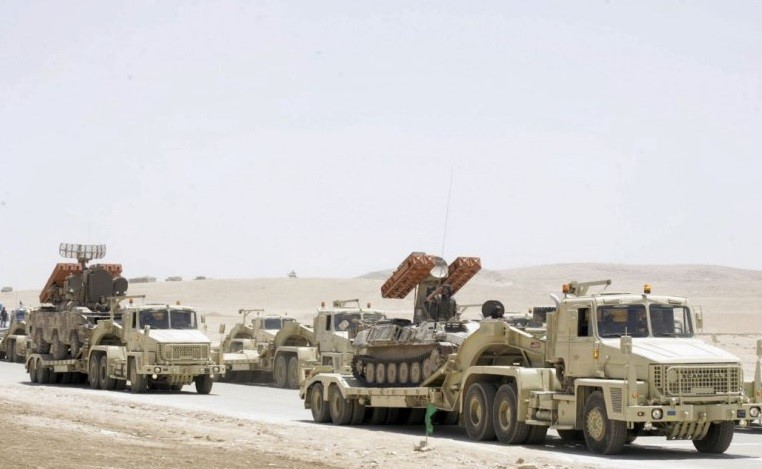
Due to these supplies (plus some ammunition from Ukraine), according to SIPRI, Armenia ranked 67th in the world in terms of arms imports in 2011-2020, and in ten years it fell almost nine times behind Azerbaijan in the development of its military potential. Some sources believe that SIPRI did not take into account all types of military-technical cooperation between Moscow and Yerevan, but it does not matter now: the bulk of the equipment that the Armenian army received until 2021 from Russia was taken out of service during the 44-day war. The Azerbaijani side claims that the amount of Armenian equipment and weapons destroyed or captured in the war exceeds $5 billion.
Still reeling from the defeat, Armenia has begun to rebuild its army. According to SIPRI, in 2021, for the first time in the XXI century Armenia surpassed Azerbaijan in terms of activity on the arms market. And by the end of three post-war years (2021-2023), it ranked 77th (25 places above Azerbaijan) among all importers in the world. Its main military suppliers during this period were India (52%), Russia (42%) and France (5.6%).
Clearly, the Pashinyan government is in search of a new security system. Its basic principle, in the words of Armen Grigoryan, secretary of the country's Security Council, can be formulated as follows:
"We have tied all our security guarantees to Russia until at least December 2021. Armenia's allies simply did not help it when it faced the threat. Taking this into account, Armenia has started to diversify and search for new security guarantees."
An important place in the defense strategy is the choice of military partners. After the 44-day war, Armenia engaged in intensive negotiations with India. According to press reports, contracts worth more than $600 million have been signed with Indian companies. New Delhi sold Yerevan two Akash mobile surface-to-air missile systems capable of engaging multiple targets simultaneously, and later doubled their number.
Armenia also received from India Pinaka multiple rocket launchers, Konkurs anti-tank missile systems, 80 and 155 millimeter howitzers on trucks, and Svati mobile radars to detect and track sources of fire. Indian newspapers say that Armenia will soon receive a batch of ATAGS howitzers, which have proven themselves in mountain battles, worth another $150 million.
There are reports of an agreement between Yerevan and India's Zen Technologies for the delivery of the state-of-the-art ZADS anti-drone systems, which entered service just three years ago. ZADS disrupts the communication system of enemy UAVs and neutralizes them. The parties recently signed an agreement to open a branch of Zen Technologies in Yerevan, which indicates that there are big plans.
At the same time, the dynamics of military cooperation between the defense departments of Armenia and France shows the highest growth rates. According to the agreement signed by their heads, Paris will transfer to Yerevan 3 radar systems "Ground Master 200" (GM200) from "Thales" defense group. They are capable of quickly detecting and tracking different aircrafts, including cruise missiles. The military ministers also signed a memorandum on France's intentions to supply Armenia with Mistral surface-to-air missile systems designed to hit low-flying objects.
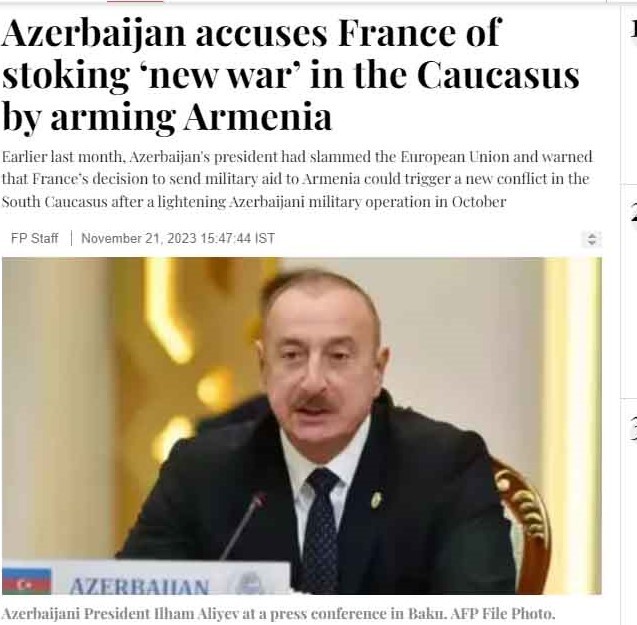
"We were talking about Mistral missiles. These are short-range missile devices. Learning how to use them is fairly easy, we've already had one discussion about such a layer defense. As a second layer, we will offer mid-level air defense. I am just presenting France's capabilities in armament and training. There is also the question of production. And as I said, there is also the defense of the last layer, which is a much more serious technology. In particular, we are talking about Thales radars, and GM200 radars will be delivered in the near future."
At the same time, Yerevan, like Baku, is looking for opportunities to expand the geography of military supplies. Armenia recently signed a military-technical cooperation agreement with Greece. And in early March 2024, Armenian Defense Minister Suren Papikyan held talks in Iran with that country's top leadership. "A number of agreements were reached on issues of mutual interest," the Armenian Defense Ministry said following the visit.
Let's arm ourselves for peace
All the data on the number and nature of weapons above are taken from open sources, although everyone realizes that this is not the most important part of the information. The most important part of it is classified and is a state secret.
But it is enough to have an idea of the process within which the poisonous fruits of an unresolved conflict are ripening. We are in a high-tech arms race, which from 2021 is gaining unprecedented momentum. While the conclusion of a treaty on the peaceful resolution of the remaining disputed issues after two wars is severely delayed, it is becoming more and more threatening. What else but a third war could such a situation logically lead to in the presence of an infinite number of risks?
The trends observed in the construction of Armenian-Azerbaijani relations after 2020 suggest that the thesis of intensive arming of Yerevan with the aim of establishing a military parity between the states may only outwardly seem reasonable and pleasant to the ear of the lagging party. In reality, it looks unrealistic, at least in the coming decades and, in the words of Azerbaijani Foreign Minister Jeyhun Bayramov, sounds "inflammatory".
| Year | Country | Military expenditures (in billions of dollars) | Growth compared to the previous year | Budget share | GDP share |
| 2021 | Azerbaijan | 2.7 | 20.5% | 15.38% | 5.27% |
| Armenia | 0.619 | -2.4% | 15.58% | 4.47% | |
| 2022 | Azerbaijan | 2.99 | 11.1% | 14.92% | 4.55% |
| Armenia | 0.795 | 28.4% | 16% | 4.32% | |
| 2023 | Azerbaijan | 3.56 | 19% | 16% | 4.9% |
| Armenia | 1.24 | 47% | 19.4% | 5.6% | |
| 2024 | Azerbaijan | 3.78 | 6% | 17.4% | 5.4% |
| Armenia | 1.4 | 7% | 19.7% | 5.3% |
[visualizer id="257106" lazy="no" class=""]
Azerbaijan is raising the bar higher and higher, and this year it has allocated two and a half times (exactly 2.7 times) more money for defense than Yerevan, promising to maintain such superiority for many years. And how under these realities can Armenia achieve military parity, which, according to a number of politicians and experts, is almost the only "reliable guarantee" of sustainable peace in the region? Or is there really a country in the world that is ready to compensate Yerevan annually for the missing funds?
Military preparations have become a norm for us, such a habitual part of life that we have stopped thinking about the burden of defense expenditures on the budgets of countries. The fact that, according to the latest data, Armenia ranks 3rd in the world in terms of militarization, while Azerbaijan ranks 9th, is actually not good but bad news for other spheres of life in both republics. Yes, Armenia has achieved an absolute record, increasing military spending by 47% in 2023 and bringing it up to $1.4 billion in 2024, but for education + science + culture + sports it was able to allocate only 60% of this amount from the budget. And Azerbaijan reached a new peak, bringing military expenditures to almost 4 billion dollars. But we see approximately the same disproportion when comparing two items in its budget: defense and social protection. Armenians and Azerbaijanis tolerated the treatment, confident that peace would come and they would solve their problems related to education, health, pensions, etc., etc., but now it turns out that maintaining peace is more expensive than war.
Arif Aliyev,
Turgut






